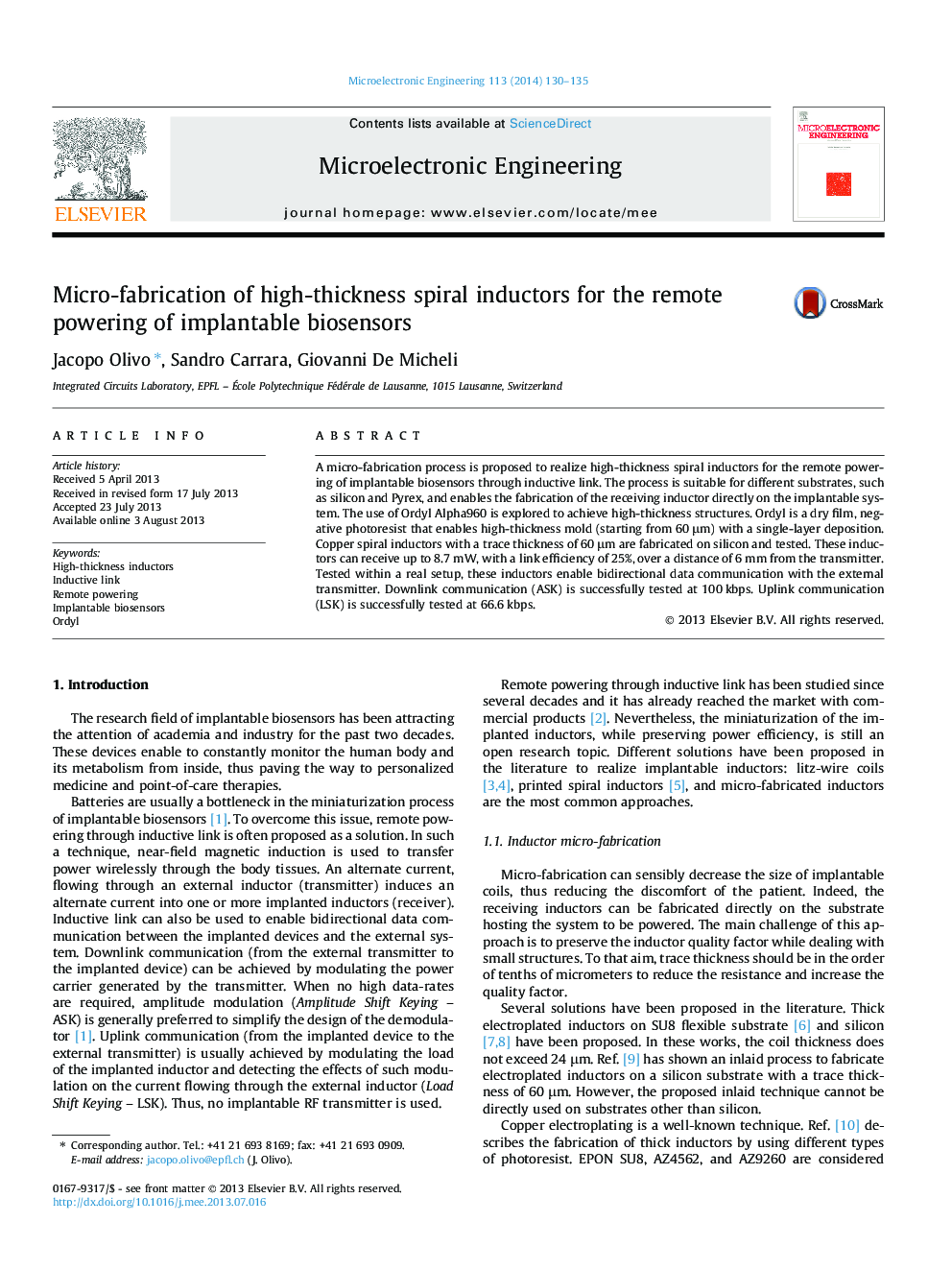| Article ID | Journal | Published Year | Pages | File Type |
|---|---|---|---|---|
| 539821 | Microelectronic Engineering | 2014 | 6 Pages |
A micro-fabrication process is proposed to realize high-thickness spiral inductors for the remote powering of implantable biosensors through inductive link. The process is suitable for different substrates, such as silicon and Pyrex, and enables the fabrication of the receiving inductor directly on the implantable system. The use of Ordyl Alpha960 is explored to achieve high-thickness structures. Ordyl is a dry film, negative photoresist that enables high-thickness mold (starting from 60 μm) with a single-layer deposition. Copper spiral inductors with a trace thickness of 60 μm are fabricated on silicon and tested. These inductors can receive up to 8.7 mW, with a link efficiency of 25%, over a distance of 6 mm from the transmitter. Tested within a real setup, these inductors enable bidirectional data communication with the external transmitter. Downlink communication (ASK) is successfully tested at 100 kbps. Uplink communication (LSK) is successfully tested at 66.6 kbps.
Graphical abstractFigure optionsDownload full-size imageDownload as PowerPoint slideHighlights•High-thickness spiral inductors to be implanted in the subcutaneous tissues.•Use of Ordyl dry film to achieve thick molds with single photoresist deposition.•Microfabrication process suitable for substrate other than silicon.•Up to 8.7 mW transmitted within 6 mm in air, with a link efficiency of 25%.•Downlink communication up to 100 kbps. Uplink communication up to 66.6 kbps.
